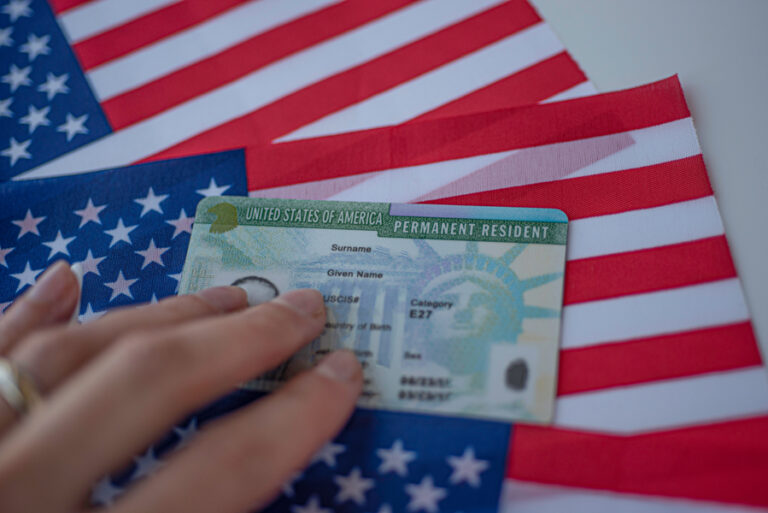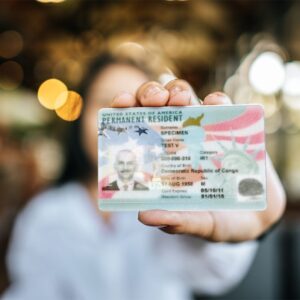How to Achieve Naturalization
Becoming a U.S. citizen or a lawful permanent resident (Green Card holder) offers significant benefits, but they are distinct statuses with different rights, responsibilities, and paths to attainment. Here, we will explore the differences between U.S. citizenship and a Green Card, as well as the process of achieving U.S. citizenship.

U.S. Citizenship vs. Green Card: Key Differences
- Rights and Benefits:
- U.S. Citizens: Have the right to vote in federal elections, obtain a U.S. passport, and receive full protection under U.S. law. Citizens can also sponsor a broader range of family members for immigration.
- Green Card Holders: Can live and work permanently in the U.S., travel abroad with fewer restrictions than visa holders, and qualify for certain federal benefits. However, they cannot vote in federal elections and have limited ability to sponsor family members.
- Permanence:
- U.S. Citizens: Citizenship is permanent and cannot be revoked except in cases of fraud or voluntary renunciation.
- Green Card Holders: Must renew their Green Card every 10 years and can lose their status if they commit certain crimes or abandon their residency.
- Travel:
- U.S. Citizens: Can travel freely and are not subject to residency requirements to maintain their status.
- Green Card Holders: Must maintain continuous residency in the U.S. and avoid long absences to retain their status.
- Deportation:
- U.S. Citizens: Cannot be deported.
- Green Card Holders: Can be deported if they commit certain crimes or violate immigration laws.
How to Achieve U.S. Citizenship
Green Card holders can become U.S. citizens through the naturalization process. Here are the steps and requirements to achieve American citizenship:
- Meet Eligibility Requirements:
- Continuous Residency: Must have been a lawful permanent resident for at least five years (three years if married to a U.S. citizen) and physically present in the U.S. for at least half of that time.
- Good Moral Character: Must demonstrate good moral character, typically meaning no serious criminal record or immigration violations.
- English and Civics Knowledge: Must be able to read, write, and speak basic English and have knowledge of U.S. history and government.
- Age Requirement: Must be at least 18 years old at the time of filing Form N-400, Application for Naturalization.
- Prepare and Submit Form N-400:
- Complete and file Form N-400, along with the required fee and supporting documentation (e.g., Green Card copy, passport-style photos, and evidence of continuous residency).
- Attend Biometrics Appointment:
- USCIS will schedule a biometrics appointment to collect your fingerprints, photograph, and signature for background checks.
- Complete the Interview:
- Attend a naturalization interview with a USCIS officer, who will assess your application and test your English and knowledge of U.S. civics.
- Pass the Citizenship Test:
- You will be given an English language test and a civics test during your interview. The civics test consists of questions about U.S. history and government.
- Receive a Decision:
- After your interview, USCIS will notify you of their decision. If approved, you will receive a notice to take the Oath of Allegiance.
- Take the Oath of Allegiance:
- Attend a naturalization ceremony and take the Oath of Allegiance to officially become a U.S. citizen. You will receive your Certificate of Naturalization as proof of citizenship.
Ready to Pursue U.S. Citizenship?
Are you a Green Card holder considering applying for U.S. citizenship? Contact us today to discuss your situation.
SHARE






